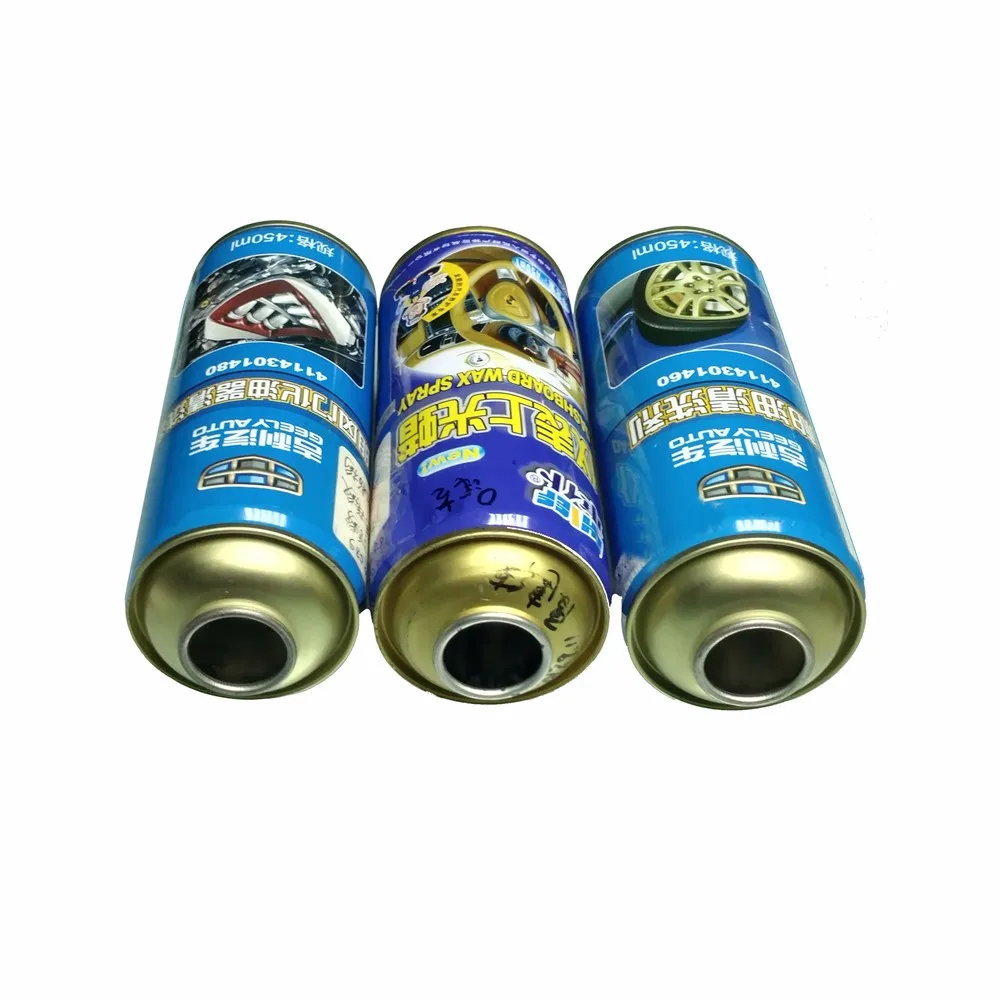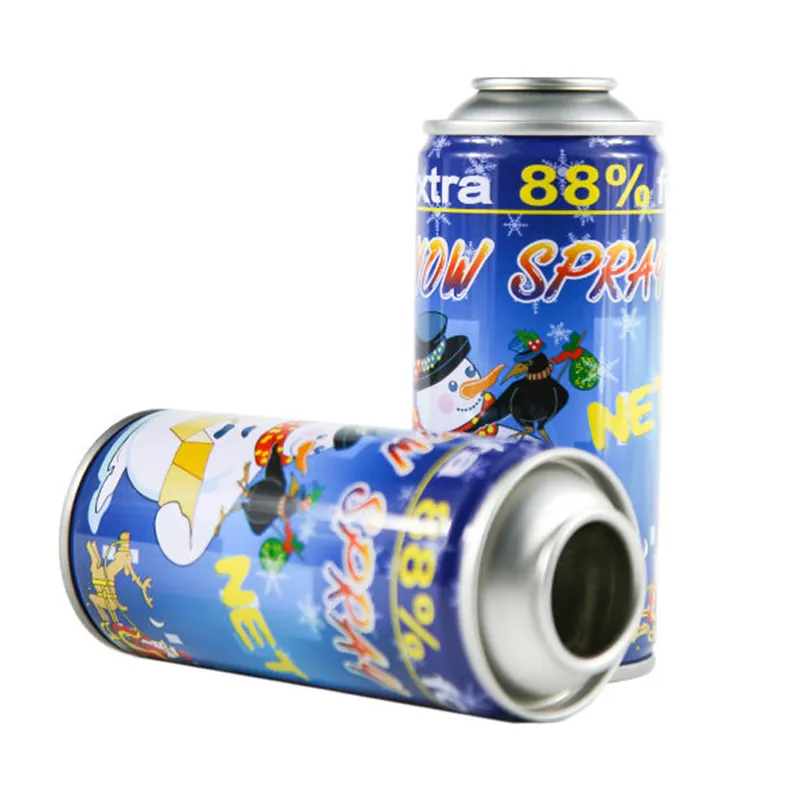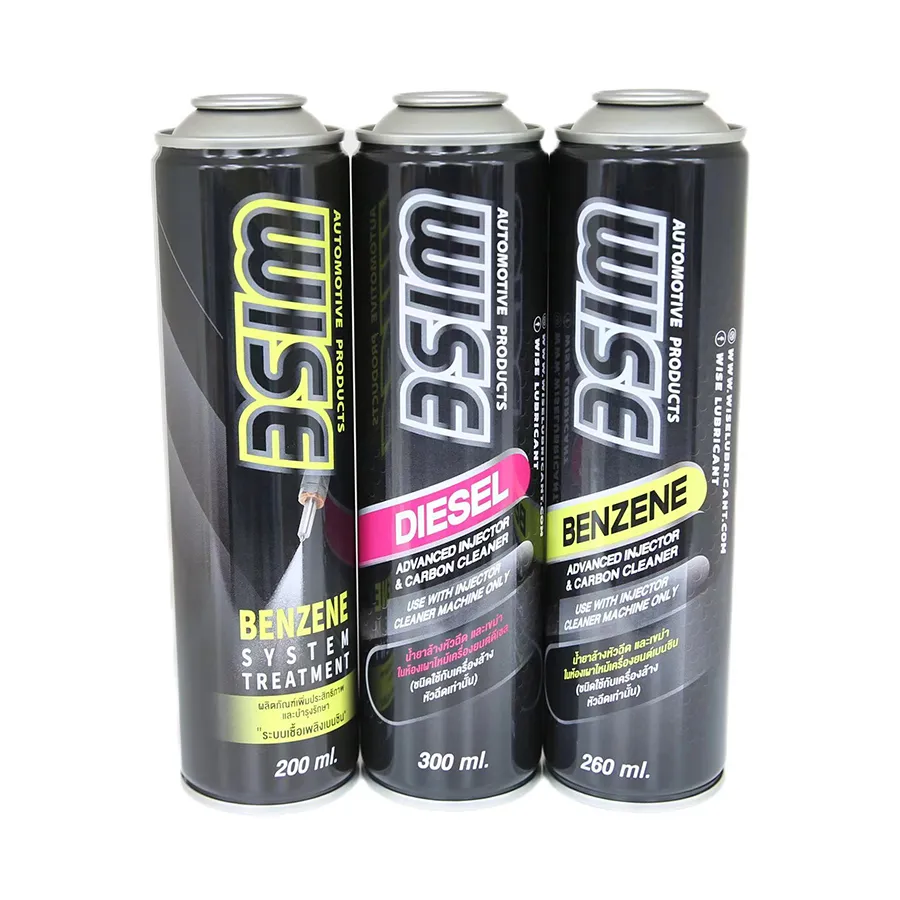As a common packaging form in daily life, tinplate aerosol cans are widely used in many fields such as food, cosmetics, and detergents, but whether its production process will cause environmental pollution has become a topic of concern for many people.
Tinplate aerosol cans are made of tinplate and have excellent physical and chemical properties, such as strong corrosion resistance, good sealing, and high temperature resistance. They are widely used to package spray products.
This article will discuss in detail whether the production of tinplate aerosol cans will cause environmental pollution from multiple aspects such as production process, use of raw materials, energy consumption, and waste emissions, and analyze current environmental protection measures and industry trends.

What is the production process of tinplate aerosol cans?
The production process of tinplate aerosol cans is relatively complex and involves multiple links, including raw material processing, molding, coating, printing, assembly, etc. Each link may have a certain impact on the environment. Therefore, understanding the production process is crucial to assessing its impact on the environment.
1. Acquisition of raw materials
The main raw material of tinplate aerosol cans is iron-based steel plate (usually tin-plated steel plate), which needs to go through a series of processing procedures, such as tin plating and stamping. Although iron resources are one of the most abundant metals in the world, the ore mining and smelting process often consumes a lot of energy and is accompanied by environmental problems such as carbon dioxide emissions and wastewater discharge.
At the same time, auxiliary materials such as coatings and inks are also needed in the production of tinplate aerosol cans. If these chemicals are not handled properly, they may also cause certain pollution to the environment.
2. Energy consumption in the production process
In the process of producing tinplate aerosol cans, many links require a lot of energy support. For example, electricity, natural gas and other energy sources are used in the heating of steel plates, curing of coatings, and forming of tinplate cans. The consumption of these energies inevitably brings greenhouse gas emissions, especially in areas with unclean energy structures.
3. Coating and printing process
The surface of tinplate aerosol cans is usually coated with a thin layer of coating or printed with ink to ensure its appearance and anti-corrosion performance. The production and application of coatings and inks may involve the emission of volatile organic compounds (VOCs), which are harmful to air quality and human health. In addition, if the metal components in the ink (such as lead, chromium, etc.) are not effectively controlled, they may also cause environmental pollution.
4. Assembly and filling
The finished tinplate aerosol cans need to be assembled and filled with gas or liquid. Although this process is relatively simple, it may still produce certain waste gas emissions. Especially for those products containing volatile components, the gas generated during the filling process may cause environmental pollution.

What are the environmental pollutions generated during the production of tinplate aerosol cans?
1. Waste gas emissions
In the production process of tinplate aerosol cans, waste gas emissions are one of the most obvious sources of pollution. Specifically, the sources of waste gas include:
● Combustion process: Equipment used to heat and process tinplate often requires the use of energy such as coal and natural gas. These combustion processes produce greenhouse gases and pollutants such as carbon dioxide (CO2), nitrogen oxides (NOx), and sulfur oxides (SOx).
● Paint and ink volatilization: During the spray coating and ink printing process, volatile organic compounds (VOCs) will enter the atmosphere with gas emissions, which will not only have an adverse effect on air quality, but also increase the risk of photochemical pollution.
● Solvent volatilization: Some process links use solvents to clean equipment. The volatilization of solvents during use will pollute the environment, especially some traditional solvents may release harmful substances when volatilizing.
2. Wastewater discharge
Wastewater discharge is another possible source of pollution in the production process. The production process of tinplate aerosol cans may produce wastewater containing pollutants such as oil, heavy metals, acid and alkaline wastewater. For example, pickling agents, alkali solutions and other chemical solutions may be used in the metal surface coating and cleaning process. If these wastewaters are not properly treated, they may cause water pollution.
3. Solid waste
During the production process of tinplate aerosol cans, some solid wastes may also be generated. These wastes include waste materials, waste paper, waste coatings, waste inks, etc. If these solid wastes are not properly disposed of, they will pollute soil and water sources. In addition, excessive packaging and overproduction will also lead to resource waste and environmental burden.
4. Noise pollution
During the operation of the equipment for producing tinplate aerosol cans, especially in the stamping and assembly links, it may generate a lot of noise. Long-term noise pollution will not only affect the health of workers, but may also have adverse effects on the surrounding environment.

Environmental protection measures and practices in the industry
Although the process of producing tinplate aerosol cans may cause certain pollution to the environment, with the improvement of environmental protection requirements and the development of industry technology, many companies have taken effective environmental protection measures to reduce pollution and improve resource utilization efficiency.
1. Waste gas treatment
Many tinplate aerosol cans manufacturers have taken waste gas treatment measures during the production process. For example, volatile organic compound (VOCs) recovery devices and purification equipment are installed to treat or recycle the emitted harmful gases to reduce pollution to the atmosphere. In addition, some factories have gradually adopted low-VOC or VOC-free inks and coatings to reduce pollution during the coating process.
2. Wastewater treatment
Wastewater treatment is an environmental protection measure that must be taken seriously in the production of tinplate aerosol cans. Many manufacturers have installed wastewater treatment facilities to treat wastewater in the production process to ensure that wastewater discharge meets environmental protection standards. Through physical, chemical and biological treatment technologies, harmful substances in wastewater can be effectively removed and water pollution can be reduced.
3. Solid waste recycling
In terms of solid waste management, more and more manufacturers have adopted recycling and reuse. Metal scrap generated during the production of tinplate aerosol cans can be recycled and reused, and reprocessed into new products to avoid waste of resources. Paint and ink waste is also safely handled through special disposal procedures to reduce environmental pollution.
4. Energy efficiency improvement
With the strict implementation of environmental protection policies, many tinplate aerosol cans manufacturers have adopted more efficient production processes and equipment to improve energy efficiency and reduce energy waste. For example, using advanced power equipment, optimizing production processes, and even introducing clean energy such as solar energy and wind energy in the production process to reduce dependence on traditional energy.
5. Green Design and Innovation
Some companies have also made green innovations in the design of tinplate aerosol cans, and introduced more environmentally friendly production materials and packaging forms. For example, biodegradable coatings and harmless printing inks are used to improve the design of aerosol cans to make them easier to recycle and reuse.
About Foshan Dekai Metal Packaging Co., Ltd.
Foshan Dekai Metal Packaging Co., Ltd. is a leading supplier of metal packaging solutions based in Foshan, Guangdong, China. Spanning over 50,000 square meters, we specialize in producing high-quality metal packaging, including tinplate aerosol cans, and customized printing services. With cutting-edge automation, our production lines—such as the FUJI PRIMEX-P453 four-color UV printing line and high-speed aerosol can lines—ensure precision and efficiency. Contact us for quotes, discounts, and purchasing opportunities.

